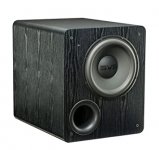I'm trying to design a ported subwoofer box and I want to make it as small as possible. So, the port will be placed near the bottom corner like in PB100.
With that said, what is the minimum distance you would provide between the outside surface of the port tube and the speaker enclosure walls? How much gap should there be, at the minimum, between the tube and the enclosure wall?
With that said, what is the minimum distance you would provide between the outside surface of the port tube and the speaker enclosure walls? How much gap should there be, at the minimum, between the tube and the enclosure wall?
Attachments
You can use a triangular port, with the cabinet walls forming two faces of the port. The difference will be that the port tuning will come out a little lower than the simulations suggest, so you might need a little trial and error to get the tuning frequency back on target.
Chris
Chris
You can use a triangular port, with the cabinet walls forming two faces of the port. The difference will be that the port tuning will come out a little lower than the simulations suggest, so you might need a little trial and error to get the tuning frequency back on target.
Chris
That is convenient but with Triangular Ports there are big problems of distortion and port chuffing.
Hardly.
There'll be slightly more friction (since there's more internal panel area per unit of port area), but I wouldn't say it's a design killer. Plenty of decent cabinets use triangular ports.
Heck, my first PA subwoofer, a Tannoy T40, was a 6th order bandpass using only triangular ports. The driver gave up before the ports were an issue.
Chris
There'll be slightly more friction (since there's more internal panel area per unit of port area), but I wouldn't say it's a design killer. Plenty of decent cabinets use triangular ports.
Heck, my first PA subwoofer, a Tannoy T40, was a 6th order bandpass using only triangular ports. The driver gave up before the ports were an issue.
Chris
